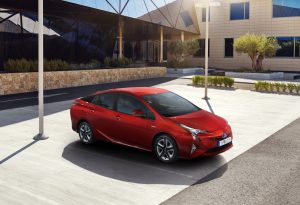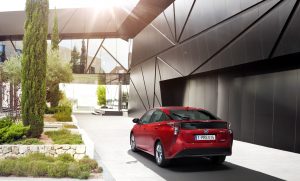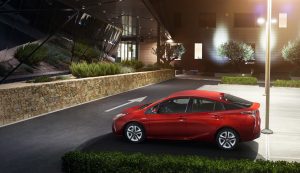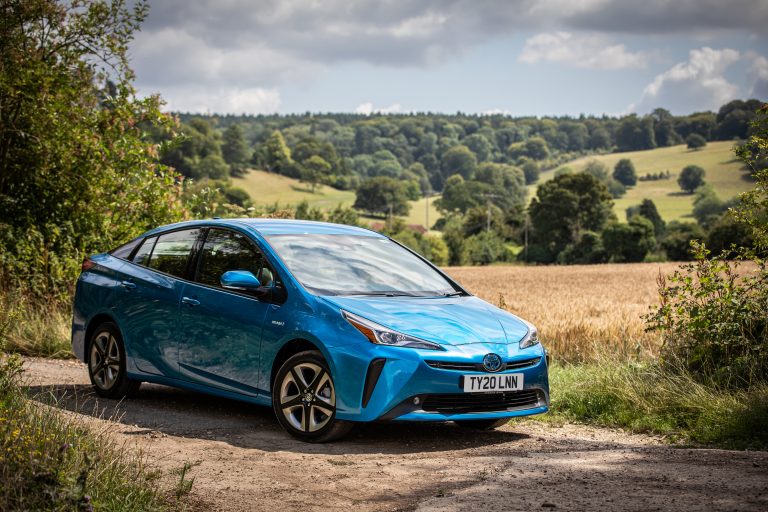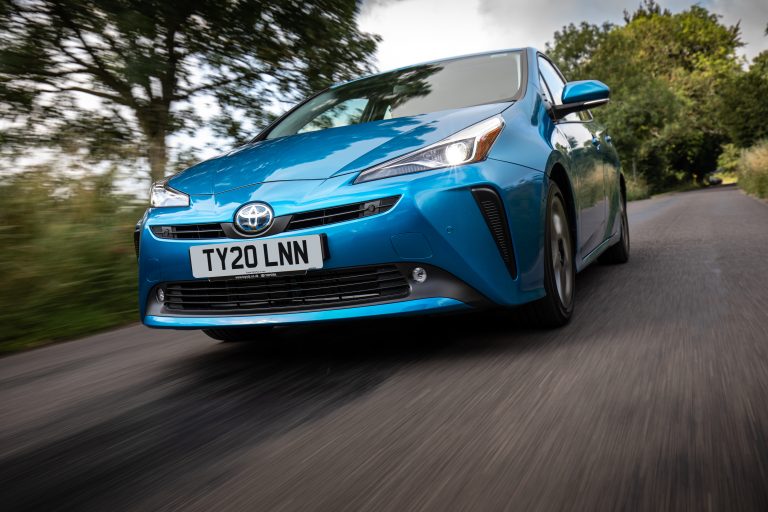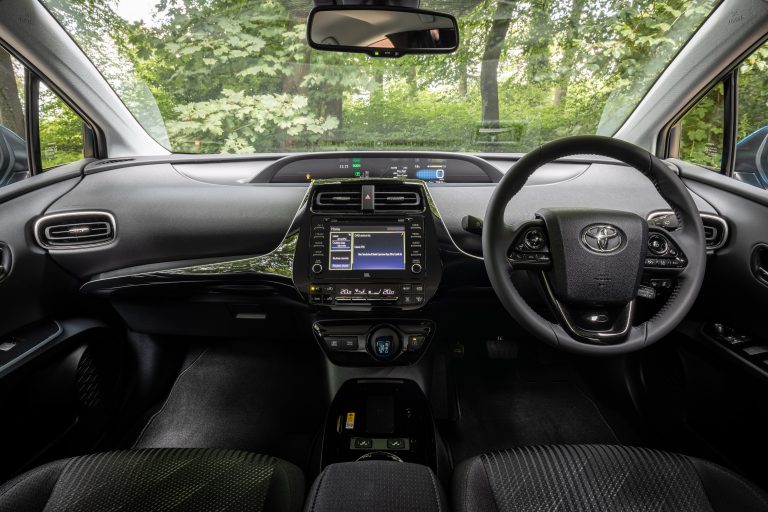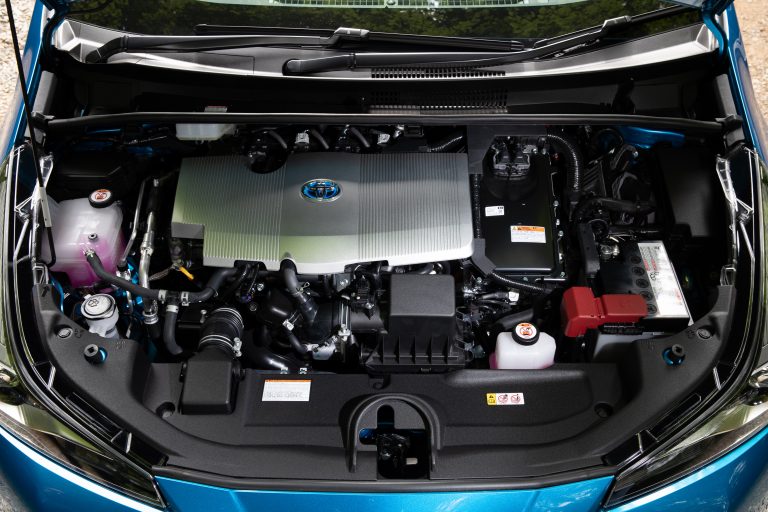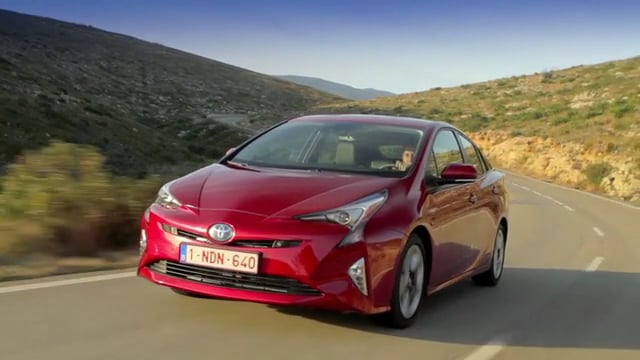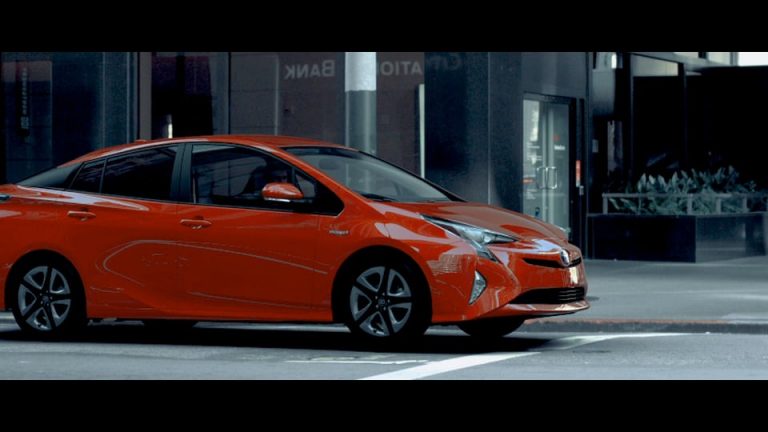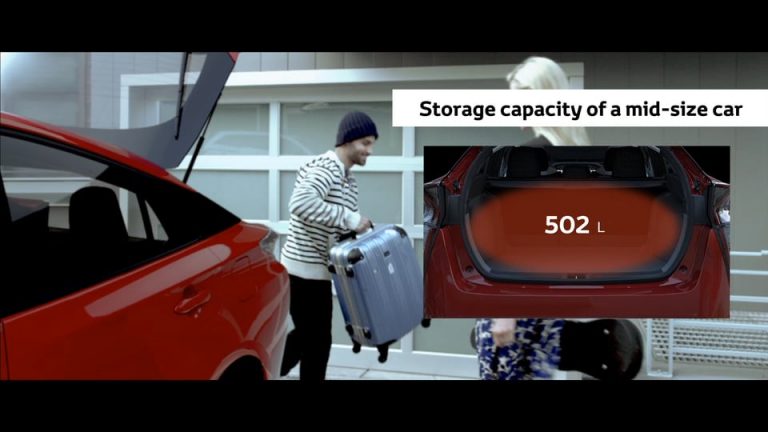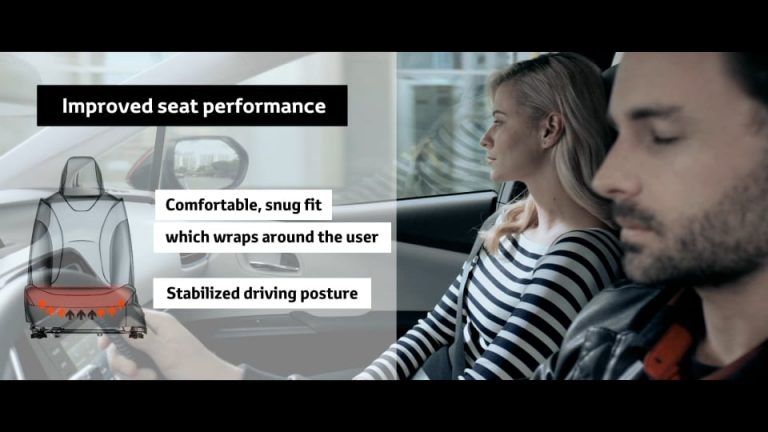New Prius: The Rebirth of the Pioneer
- Fourth generation of Toyota’s original hybrid car
- CO2 emissions set to improve by 18 per cent in largest advance yet in Prius performance
- First Toyota to be built using the Toyota New Global Architecture
- New TNGA platform contributes to more rewarding drive and improved safety performance
- Prius retains its role as Toyota’s technology ambassador
Click here for more images of new Prius
The introduction of the all-new fourth generation Prius marks a further advance in the history and achievements of Toyota’s hybrid power technology.
The new model builds on the strengths and achievements of its predecessors and is set to establish new benchmarks in fuel economy, emissions and efficiency. Each successive Prius has delivered improvements in these areas, but the new model is aiming to make the biggest leap yet in performance, with a target of improving CO2 emissions by 18 per cent.
This achievement is only one aspect of a product that has evolved to acquire new capabilities and greater driver appeal. Powered by a new generation of Toyota’s full hybrid powertrain, new Prius marks significant advances in highway fuel economy and provides a much more rewarding driving experience. Acceleration is smoother and more responsive, and, at higher speeds, is quieter and has a more linear feel that is better aligned to engine speed.
The new car’s dynamic capabilities are rooted in the use of the first Toyota New Global Architecture (TNGA) platform. At a stroke, this endows the car with a lower centre of gravity for improved handling response and stability. It also gives the designers a freer hand to craft a car that has richer visual appeal, with lower lines overall and a more athletic profile. TNGA also helps define the “peace-of-mind” interior, with its excellent packaging, driving position and comfort. Load space is also improved thanks to the use of a smaller, more energy-dense hybrid battery and a new double wishbone rear suspension system – features which do not intrude on boot capacity.
Prius remains Toyota’s technological ambassador, a showcase for new, relevant technologies that raise levels of safety, convenience, performance and comfort.
Safety remains a priority, with the TNGA chassis optimised for excellent impact performance. The scope of the Toyota Safety Sense package is extended in the new Prius with addition of radar-managed Adaptive Cruise Control and a pedestrian detection function for the Pre-Crash Safety system.
The full hybrid powertrain has undergone extensive revisions to improve efficiency, reduce weight and sharpen performance. Detailed design changes to the engine have achieved more than 40 per cent thermal efficiency – world-best performance for a petrol unit. Other hybrid system components have been made more compact and have been repositioned for optimum packaging, further contributing to the car’s lower centre of gravity. The new nickel-metal hydride hybrid battery is more compact while its durability and charging performance have been significantly improved.
In combination, these changes and innovations confound the popular notion of what an eco-car should be like to drive and to look at. The new Prius demonstrates the genuine rewards that remain to be enjoyed from Toyota full hybrid technology, advantages that will steadily feed through to new generations of other Toyota hybrid models.
Prius Heritage
In 1997 the original Toyota Prius was launched with the declaration “just in time for the 21st century”. As the world’s first mass-produced hybrid-powered car, it was true to the Latin roots of its name in being ahead of its time.
That first car was a small four-door sedan, powered by a new hybrid system featuring a combination of 1.5-litre VVT-i Atkinson cycle petrol engine and 33kW electric motor. Headline efficiency figures were 120g/km CO2 emissions and an average 55.4mpg fuel consumption. This initial package was comprehensively redesigned and improved in the second generation model in 2003, with considerable gains in power and efficiency, plus a larger, more stylish, comfortable and practical hatchback design. The improved hybrid system adopted a hybrid battery pack that was smaller and lighter and offered a higher energy density. The fuel economy improved by 15 per cent to 65.7mpg and CO2 levels fell to a new low of 104g/km.
The current Prius made its debut in 2009, delivering an even stronger combination of power and efficiency. The hybrid system’s output was now more than a third greater than in the original model, while at the same time CO2 emissions had fallen by a quarter and fuel consumption was 23 per cent better.
The first generation Prius created the hybrid vehicle market, the second generation raised the model’s popularity with a more advanced image, and the third generation secured mass-market success, helping Toyota progressively roll out hybrid power into its mainstream model ranges.
In its first 18 years, Prius has reshaped the motoring landscape, bringing hybrid technology into the mainstream market and helping focus the attention of industry and consumers on how cars can be made cleaner and more efficient. The way in which people have come to understand, appreciate and adopt Toyota hybrid power is witnessed by more than eight million cumulative sales of Toyota hybrids worldwide since 1997, including more than 3.5 million Prius. The growth rate has accelerated in line with the technology’s higher visibility and the availability of an increasing range of vehicles covering different market segments. The fourth generation Prius will add further impetus to hybrid’s market appeal, achieving its strongest environmental performance yet, while delivering much improved styling and driving dynamics.
Toyota’s experience with the Prius has been central to its development of hybrid as a foundation technology for alternative powertrains, not just with conventional petrol and diesel engines, but with biofuels and hydrogen fuel cells as well. The basic technical premise that gave Toyota its breakthrough with Prius continues to support development of new mobility solutions, from the all-electric urban i-ROAD to Mirai, Toyota’s first hydrogen fuel cell saloon.
The Market
The new car market has changed greatly in the 18 years since Toyota introduced the original Prius and set in motion its hybrid technology programme. Growing awareness of environmental issues and the need to protect natural resources have not only shifted people’s perceptions of how a vehicle should perform, they have been reinforced by national and international legislation requiring manufacturers to reduce vehicle emissions.
These changes have helped Toyota hybrids establish themselves in markets worldwide and have also given impetus to other manufacturers in the development of rival hybrid systems and other alternatives to conventional petrol and diesel engines, such as all-electric vehicles and plug-in hybrids.
Hybrid has become Toyota’s key competitive advantage, the principal quality that differentiates it from other manufacturers and which gives it a specific strength in the marketplace. This is reflected in the fact Toyota hybrids make up more than 50 per cent of all the alternative powertrain vehicles sold in Europe – more than all the other hybrids, plug-in hybrids and electric vehicles combined.
The way in which hybrid has become a driver for Toyota’s success in Europe’s core new car market segments is evidenced by sales figures for 2014 which show hybrids accounted for 55 per cent of all Auris sales and 33 per cent of Yaris sales. Furthermore, hybrid is bringing more new customers to Toyota, with these models attracting significantly high levels of conquest sales from other brands – up to 63 per cent for Yaris Hybrid and 51 per cent for Auris Hybrid.
Toyota believes hybrid’s market potential will increase further, with more people taking up the technology as the emissions performance of conventional petrol and diesel engines come under closer scrutiny and legislative control. At the same time, more manufacturers are following Toyota by introducing their own hybrid models, increasing competition and giving customers a wider choice.
Toyota will continue to enjoy the advantage of offering a full hybrid system, in which the electric motor can operate independently of the petrol engine. This allows the car to be driven in all-electric EV mode when possible, with zero fuel consumption and zero tailpipe emissions. These benefits are not available in “mild” hybrid systems, in which the electric motor can be used only to support the performance of a petrol or diesel engine.
Toyota believes that continuous improvement of its full hybrid technology will enable it to strengthen its market position, ahead of the wider uptake of alternatives such as plug-in hybrids, electric vehicles and fuel cell vehicles. Key challenges in securing this growth are to strengthen environmental performance while increasing the attractiveness of hybrids as desirable cars that are fun to drive. These qualities are fundamental to the new Prius, which sets new benchmarks for environmental performance while making a stronger emotional connection with customers through improved styling, quality and driveability.
THE THREE PILLARS OF THE NEW PRIUS
The new Prius is founded on outstanding hybrid technology, delivering unprecedented efficiency and environmental performance. But beyond these credentials it embraces stronger emotional and performance qualities that give it wider and greater appeal to customers who appreciate eye-catching, original styling, high levels of sensory quality, practicality and a driving experience that is genuinely fun and rewarding.
The realisation of these qualities in the new Prius is based on three pillars: the Toyota New Global Architecture, design and styling, and a new generation full hybrid system.
Toyota’s First TNGA Platform
The new Prius is the first model to use a Toyota New Global Architecture (TNGA) platform. This plays a defining role in the car’s essential fun-to-drive quality, giving new Prius a lower centre of gravity compared to the current model, which in turn allows for an improved driving position.
It makes a significant contribution to improved driving dynamics – beyond what might be expected of an eco-car. This quality is further supported by a body that is 60 per cent more rigid than before thanks to extensive use of high-strength steels and additional reinforcement to the centre pillars’ lower structure and the panel connection. The result is superior, direct and responsive handling, without having to use firmer suspension settings.
Double wishbone rear suspension
The new double wishbone rear suspension plays a significant part in this, producing one-third the level of shock when driving on uneven roads compared to the current Prius. To achieve better handling with more direct response, the front MacPherson strut suspension has been revised with an increase in the incline angle of the shock absorbers and the use of slant bearings.
The chassis is fully able to harness the more responsive acceleration provided by the new full hybrid system. Greater stability is maintained, body roll is much reduced in high-speed lane changes and performance is smoother on rough surfaces. On winding roads, new Prius holds easily to the driver’s intended line and there is outstanding straight-line stability when driving at speed.
Improved safety with TNGA
Safety is a key consideration in the development of the new TNGA platforms, not just in terms of secure, stable handling, but also in improving the driver’s vision. The view from the steering wheel of new Prius is significantly wider and deeper than in the current model and rearward vision is improved by the wider curve of the rear glass.
The platform has been optimised for excellent performance in independent international crash testing, including Euro NCAP.
Styling and Design
New Prius is not simply “another green car,” its design and high quality throughout give it greater emotional appeal and a powerful, desirable presence, underpinned by the fundamental strengths of the new TNGA platform. As Toyota’s most advanced car, it is appropriate that it is an image leader and the intention has been to produce a design that makes an immediate impact.
The car’s new low-slung stance – made possible by the TNGA platform – suggests an excellent driving performance, supported by a distinctive new body silhouette that is both athletic and aerodynamically efficient. The result is a “human-tech” design with strong emotional quality, fully exploiting the opportunity presented by the car’s lower centre of gravity.
Exterior
The design theme for the new Prius has been to capture in the contrast created between the rich curves and hard surfaces of the bodywork. The result is a new form that stands out with its smooth yet sharp use of lines.
The frontal design is true to Prius’s heritage in making the Toyota emblem a strong focal point, but it also makes an impactful visual statement about its more advanced design and performance with a much lower bonnet height. New headlights have permitted slimmer, more striking headlamp units to be designed and these combine with an intricate but unfussy treatment of the fog lights and air intakes to give the car a distinctive and intelligent appearance
In profile, Prius displays a silhouette that is lower and more athletic. The TNGA platform has allowed for significant reduction in height in key areas to create a lower, more dynamic appearance. The overall height has been reduced by 20mm compared to the current Prius, to 1,470mm. The peak of the roof has been moved forward, and the belt line has been dropped, emphasising the car’s stronger dynamic qualities. The new model retains the 2,700mm wheelbase of the current Prius, but is 60mm longer overall at 4,540mm. It is also 15mm wider at 1,760mm.
New Prius has a unique aerodynamic treatment to the rear section of the roof, which supports the clean flow of air over and away from the vehicle. The new TNGA platform is also designed for the smoothest possible airflow beneath the car. In combination, the car’s low wind resistance features secure a world-class coefficient of drag.
The rear end design flows strongly from the rear spoiler down through the bumper, with the wheel placement further emphasising the car’s firmly planted stance. The slim, striking combination lamps have been moved to the outer edge of the car, following a sharp angle that is accentuated by the distinctive, unbroken line of the red LED tail lights.
Toyota has produced a vibrant colour palette for new Prius with seven exterior finishes available, including a new shade, Emotional Red.
Interior
“Peace of mind” is the theme for the cabin, which is designed to be a welcoming, quiet and comfortable space, with a dashboard that wraps gently around the driver and which flows almost seamlessly into the door panels. The number of different parts that make up the instrument panel has been reduced, for example the piano black section is now a single unit. This creates a strong visual contrast with the areas of the dashboard and door panels, finished in a high-quality white material that is soft to the touch and scratch-resistant.
The fine attention to detail can be seen in elements such as the air vents, while the high ergonomic quality extends to intuitive positioning and range of adjustment of the seats. The high sensory quality of the interior is further emphasised by a pleasingly tactile leather steering wheel trim. Two interior colour choices have been created for new Prius – cool grey and black. Overall the cabin environment is light and spacious
Quietness has always been a distinguishing characteristic of Toyota’s hybrid vehicles and the new Prius provides a cabin environment that exudes a genuine sense of luxury in exceptionally low levels of noise, vibration and harshness. New Prius’s improved ride is further supported by a new front seat design that provides more comfort and wraparound support.
New Hybrid System
New Prius heralds the next generation of Toyota’s signature hybrid powertrain. This new family of powertrains builds on the two pillars that have made Toyota hybrids popular with drivers across the globe: on the one hand their fuel efficiency, and on the other the relaxed and carefree drive that they provide.
Toyota has focused its efforts on making this next generation of hybrids even easier and more intuitive to drive. They have been set up so that they give a natural, immediate, but smooth response to any accelerator pedal input. Refined and confident, they deliver the right level of performance.
But of course, fuel economy has been improved as well. The new hybrid systems will come in a more compact package, that is lighter in weight and lower in cost. This new generation will reflect significant advances in battery, electric motor and petrol engine technologies.
The batteries will offer higher energy density, which means more output from units of the same dimensions and weight.
The electric motors will be smaller in size, yet also provide a better power-to-weight ratio.
And the thermal efficiency of the petrol engine – at 38.5 per cent already very high on the current Prius – is increased to more than 40 per cent – a world’s best for a petrol unit.
As a result, applied to the new Prius, this new hybrid system targets an 18 per cent improvement in fuel efficiency compared to the current car.
PRIUS: TOYOTA’S HIGH-TECH AMBASSADOR
Prius has always provided a reference point for Toyota’s development of useful, intuitive high-tech features and that remains true for the fourth generation model, which benefits from a number of innovations that support safety, convenience and better, more sophisticated HMI performance.
Chief Engineer Koji Toyoshima explains: “Prius is the ambassador for Toyota technology, a brand vector pulling hybrid sales of our core models.”
Toyota Safety Sense with additional functions
New Prius will make a significant advance in active and preventive safety measures with the adoption of Toyota Safety Sense. This package of safety features will be further extended in new Prius with the addition of radar-governed Adaptive Cruise Control and a pedestrian recognition capability in the Pre-Collision Safety system.
In the current Prius range, only around two per cent of vehicles are sold with the Pre-Crash Safety system. In the new Prius this is one of the standard features of Toyota Safety Sense, together with Lane Departure Alert, Automatic High Beam and Road Sign Assist.
Extra sensors for safety and convenience
The technologies Toyota has developed for successive generations of the Prius have always served a clear purpose. This continues in the new model with an increase in the number of sensors to provide the driver with more comprehensive information, improving safety and convenience. In effect, new Prius becomes a driver’s sixth sense, recognising and anticipating things they might not notice themselves.

